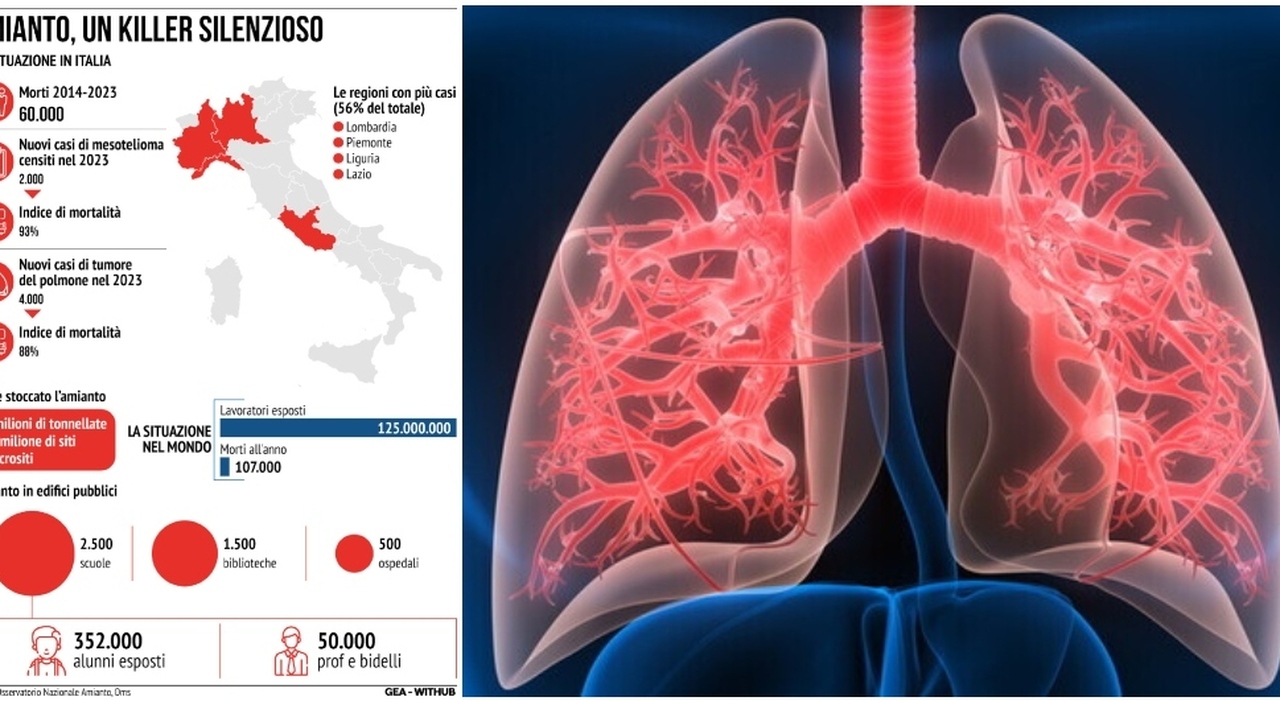Monday 29 April 2024, 17:26 - Last updated: 30 April, 07:32
"Asbestos is still present everywhere in Italy, even in unsuspecting ways, without anyone taking action," denounces Antonio Giordano, an Italian oncologist working in the USA, where the strong testimony of journalist Franco Di Mare, who revealed the disease he presumably contracted during his years as a war correspondent in the Balkans, has made a significant impact. Franco Di Mare and his cancer, what happened with Rai: the certification to claim damages and the case stalled at Inail. His story "has also shaken America. We stand by his side," declares to Adnkronos Salute the scientist, president of the Sbarro Health Research Organization (SHRO) and professor at Temple University in Philadelphia. On one hand, "there is an urgent need to definitively eliminate asbestos present in the environment," on the other hand, "it is necessary to develop an adequate monitoring system for former exposed individuals," urges Giordano, convinced that instead "economic interests slow down scientific research." What is pleural mesothelioma? "Pleural mesothelioma," explains the oncologist, "is a silent killer, but at the same time, it is one of the few cancers for which the etiology is almost certain: the development of this neoplasm is certainly related to the exposure to asbestos fibers." Giordano knows this well, both because "I have been studying mesothelioma for many years" and because "I can consider myself a 'son of art'. My father, Giovan Giacomo Giordano - he recounts - was one of the first scientists, along with Professor Cesare Maltoni of the Collegium Ramazzini in Bologna, to study and discover the severe damages derived from exposure to asbestos fibers, and also thanks to his research, asbestos was banned in Italy in 1992." A ban adopted "at the European level since 1999." The risks. Yet, people continue to die from mesothelioma for "two reasons," the scientist reasons. First, because of the "long clinical latency of the tumor, considering that it can take up to 30 years between the exposure to the mineral and the development of the disease." And then, because, "despite all activities of extraction, trade, import, export, and production of asbestos, asbestos products, or products containing asbestos being banned, the material is still present in large quantities - warns Giordano - in places where remediation and disposal have not been carried out." After how much it shows. In Italy, for cases of mesothelioma, the tumor that journalist Franco Di Mare has been living with for 3 years, "we are still at the tip of the iceberg: this neoplasm, in fact, develops 30 years after exposure to asbestos microparticles. If we add to this that the first law that definitively banned the use of asbestos in our country is number 257 of 1992, we can say that unfortunately, the situation does not bode well for the coming years." This is explained to Adnkronos Salute by Saverio Cinieri, president of the Aiom Foundation (Italian Association of Medical Oncology). "To ensure that fewer and fewer people get sick with this tumor - he warns - it is essential to dispose of the eternit by placing the material containing asbestos in special landfills authorized by the ministry, but this service has a cost. Unfortunately, there are still those who dump the toxic waste in the open countryside, rather than paying."
© ALL RIGHTS RESERVED
This article is automatically translated
